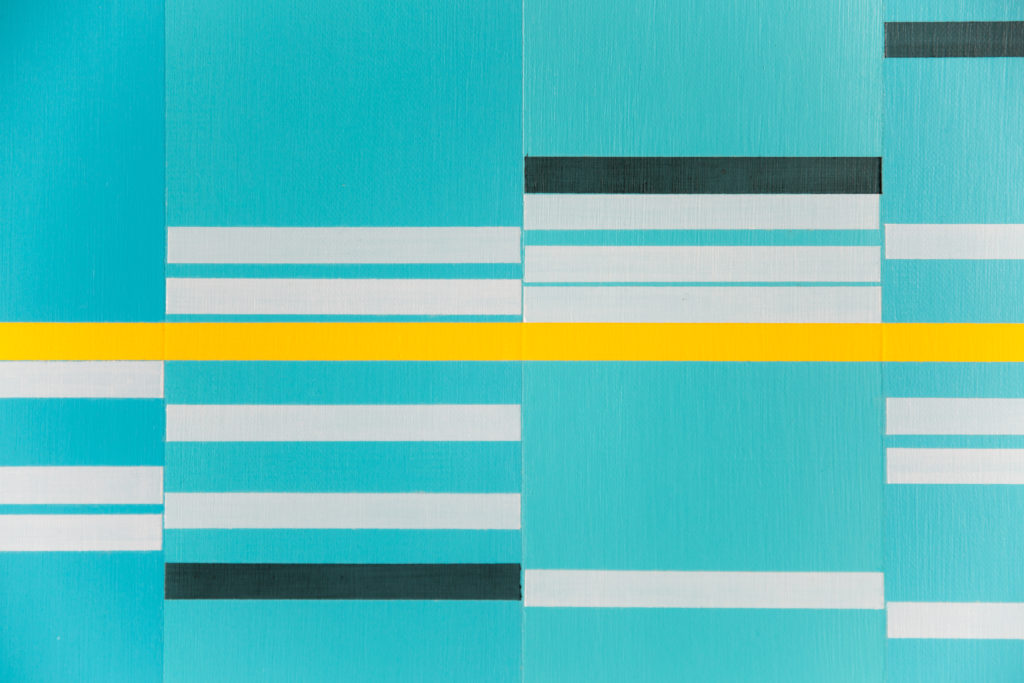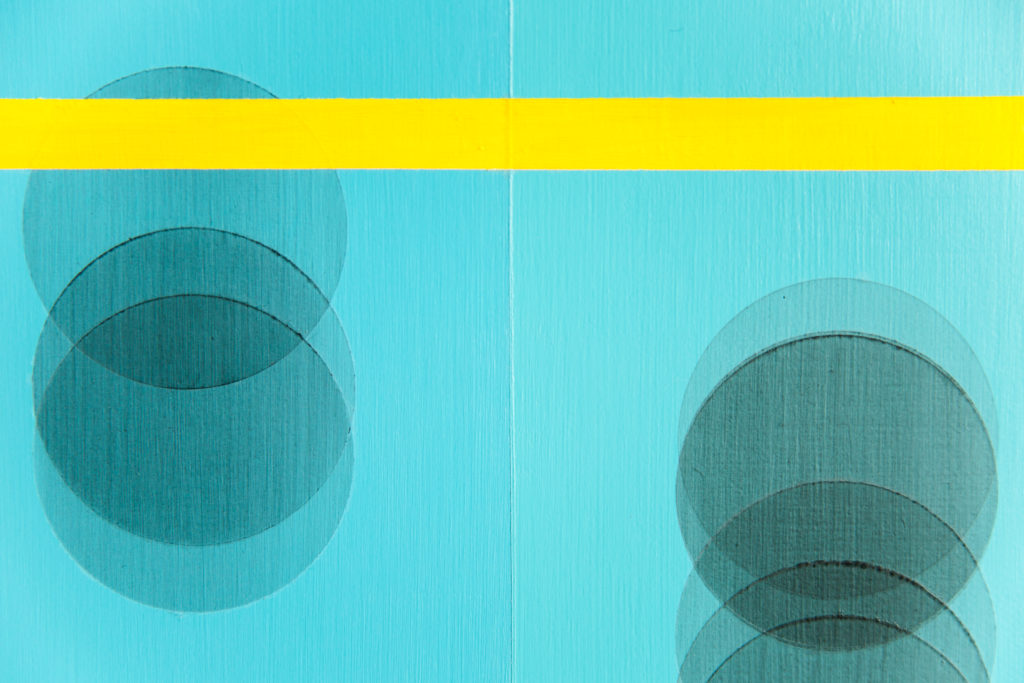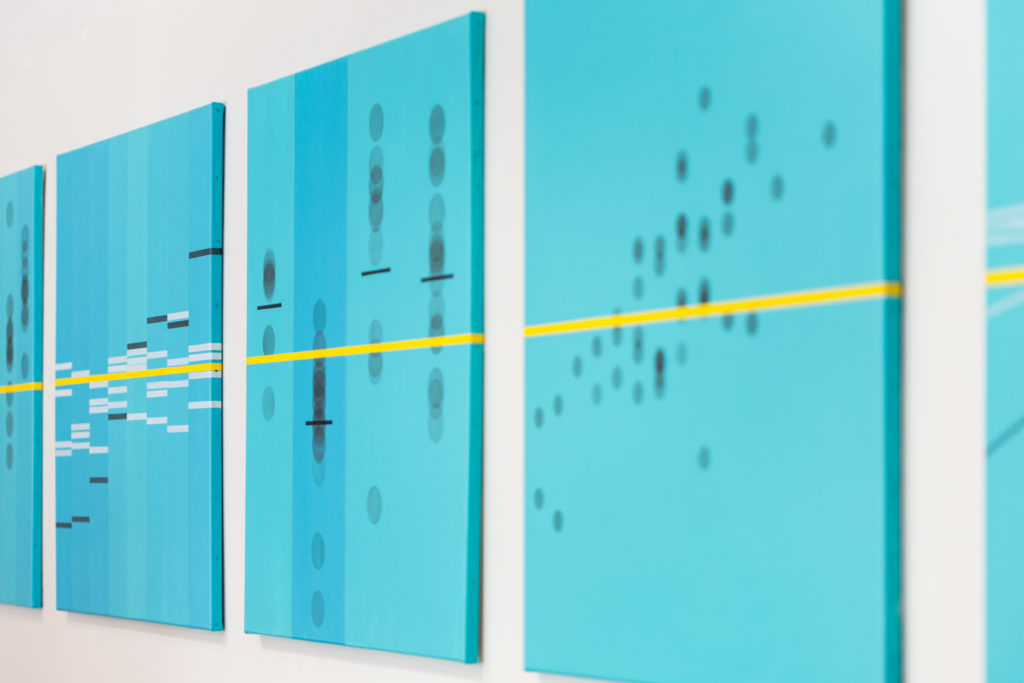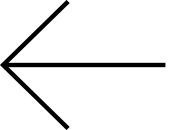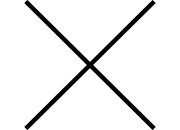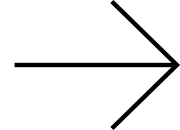“La vague” [The wave] is a series of five paintings, all acrylic on canvas and of the same format: 80 x 80 cm. It would be easy to associate them with movements of abstract art or new geometric painting, but these five canvases illustrate an invisible and inscrutable phenomenon that appeared during the swimming competition of the 2016 Rio Olympic Games. The Olympic pool developed a circular current that looped around the edges of the pool. This phenomenon slowed the athletes on one side and accelerated those located on the other, sparing those swimming in the middle lanes. It biased all the swimming results, namely those that included several lengths.
The organisers of these kinds of competitions do everything to avoid this pitfall. As well as the architectural challenge, there is also a physical difficulty as these currents are invisible to the eye. In this case, the 2016 Rio Olympics were filmed and broadcast worldwide, but nobody saw anything. You can still watch the images on Internet, in slow motion, enlarged, several times, but you still can’t see anything. Only mathematics was able to detect this sporting bias, after having processed the athletes times, drawing waves in places where flat diagrams were expected.
Soline seized this physical anomaly and his paintings are most certainly the best way to represent this unjust current. The pictorial quality of his five canvases, their colours, transparency and movement, reinforces the mystery of this attempt to figure the undetectable. An approach in which art and science become two manifestations of the same language, and whose deciphering is the base of his work.
His most recent research looks more specifically – and not without irony – at our thirst for control, our obsession of the quantification of the world and the vanity of this behaviour,



